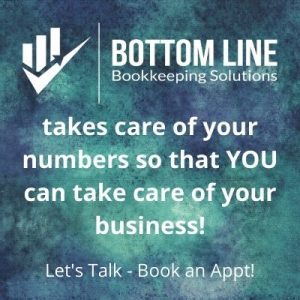Upselling and Cross selling are both sales strategies used by businesses to increase revenue and customer value, but they involve different approaches and objectives. Let's take a look at what they actually are and the difference between upselling and cross-selling:
What is Cross-Selling?
Cross-selling involves offering additional products or services related or complementary to what the customer is purchasing. The goal is to encourage customers to buy more than one product or service from your business. Cross-selling takes advantage of the customer's existing interest or need and suggests related items that could enhance their overall experience.
For example, if a customer is buying a laptop, a cross-selling strategy might involve suggesting laptop accessories such as a laptop bag, mouse, or extra charger.
What is Upselling?
Upselling, on the other hand, involves persuading a customer to purchase a higher-end or more expensive version of the product they are considering. The focus here is to increase the overall value of the sale by convincing the customer that the higher-priced option offers better features, quality, or benefits.
For example, if a customer is looking at a smartphone, an upselling approach might involve recommending a model with more advanced features and a higher price point.
Key Differences Between Upselling and Cross Selling
1. Objective:
– Cross-selling aims to broaden the customer's purchase by suggesting related or complementary products.
– Upselling aims to increase the transaction value by encouraging the customer to choose a more expensive or premium version of the product they're interested in.
2. Product Relationship:
– Cross-selling involves offering products associated with or complementing the customer's current selection.
– Upselling focuses on presenting upgraded or premium versions of the same product or service.
3. Customer Perception:
– Cross-selling is generally seen as a way to enhance the customer's experience by providing them with additional items that align with their needs.
– Upselling can sometimes be perceived as an attempt to persuade the customer to spend more money, potentially leading to concerns about value for money.
4. Strategy Implementation:
– Cross-selling often involves showing related products on a product page, during checkout, or through personalized recommendations.
– Upselling can be done by highlighting premium features and benefits through effective product descriptions, comparisons, or personalized consultations.
5. Outcome:
– Cross-selling results in multiple products being sold in a single transaction, which can lead to a higher average order value.
– Upselling results in a single product or service being sold at a higher price point, leading to increased revenue per transaction.
Effective Cross-Selling Strategies
1. Bundling and Package Deals
Create product bundles or package deals that combine complementary items together at a slightly discounted price compared to purchasing each item individually. This encourages customers to buy multiple related products in one go. For example, if you're selling a camera, you could offer a bundle that includes the camera, a camera bag, a memory card, and a cleaning kit. By presenting these items as a cohesive package, customers are more likely to see the value in purchasing all of them together.
2. “Frequently Bought Together” Recommendations
Implement a “Frequently Bought Together” or “Customers Who Bought This Also Bought” section on your product pages. Use data analysis and algorithms to display products that are commonly purchased together. This provides customers with easy access to additional items that enhance their original purchase. For instance, if a customer is buying a smartphone, this section could suggest phone cases, screen protectors, and headphones.
3. Personalized Recommendations
Leverage customer data and preferences to provide personalized cross-selling recommendations. Analyze past purchases, browsing history, and demographics to suggest products that align with each customer's individual interests and needs. This can be done through email marketing, on-site recommendations, or even personalized messages during the checkout process. For instance, if a customer has previously bought gardening tools, you could suggest gardening books or specialized plant fertilizers based on their past behavior.
Remember that successful cross-selling strategies should be non-intrusive and genuinely helpful to the customer. The goal is to enhance their shopping experience by offering products that complement their original purchase, rather than overwhelming them with unrelated offers.
Effective Upselling Strategies
1. Tiered Pricing and Feature Comparison
Present your products or services in a tiered pricing structure with clear feature differentiations between each tier. Highlight the benefits and added value of the higher-priced tiers, such as advanced features, additional services, or longer warranties. By showcasing the advantages of upgrading to a higher tier, you can convince customers that the extra cost is justified by the enhanced benefits they'll receive.
2. Limited-Time Offers and Exclusive Deals
Create a sense of urgency and exclusivity by offering limited-time upselling offers. For example, you can offer a special discount or bonus for upgrading to a higher-priced version if the customer makes a decision within a specific timeframe. This approach encourages customers to act quickly to take advantage of the extra value you're offering, increasing the likelihood of upselling success.
3. Add-Ons and Enhancements
Suggest add-on products or enhancements that complement the customer's main purchase and enhance their overall experience. During checkout or after the customer has made their initial selection, present them with options to enhance their chosen product. For instance, if a customer is buying a laptop, offer them the option to upgrade to a larger SSD or more RAM for improved performance. Make sure the add-ons are presented in a way that clearly explains how they'll benefit the customer.
Remember, successful upselling strategies should be customer-centric and focused on delivering additional value. The goal is to help customers make more informed decisions about their purchases, ensuring they feel that the higher-priced option offers tangible benefits that align with their needs and preferences.
Both cross-selling and upselling can be effective strategies when executed appropriately and ethically. Businesses often use a combination of these strategies to optimize their sales and enhance customer satisfaction.






